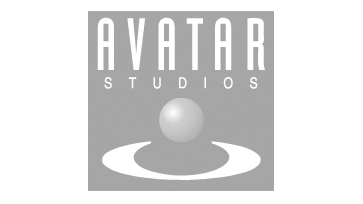Mixing VS Mastering
If you’re a seasoned audio professional, you probably know the difference between mixing music and mastering music perfectly well. In that case, you may want to move on and delve into another article – or better yet, download the Finalizer app and get started tweaking some mastering parameters! But if you’re relatively new to mastering and/or mixing, please read on.
In essence, mastering deals with the song in context, while mixing deals with the song as an isolated piece of art (at best). Another way to put it, is that mixing has a micro perspective and mastering has a macro perspective.

What is the Next Destination?
One significant difference lies in what the next immediate destination for your work is. If you mix music, the next stop is mastering, and if you master, the next (and final) stop is whatever media your audience prefers – Vinyl, Radio, Spotify, Apple Music, Tidal, CDs, etc.
In fact, chances are that your audience will listen to your music on all of the media platforms you make your music available on. Sure, if you don’t release on vinyl or CD, that is not relevant, but even if you only use one or more of the streaming services available, they will listen on different playback systems, which is equally important. For instance, they may listen to home stereos, car audio systems, earpods, at restaurants and nightclubs – all of which of various qualities and sizes.
Therefore, as a rudimentary rule of thumb, think of mixing as a process where your sole focus is on making your song sound as great as absolutely possible, bringing out all of your ideas in as much detail as possible, through the system you use in your studio – your choice of DAW (Pro Tools, Nuendo, Cubase, Logic Pro, Studio One, etc.), audio interface and studio monitors.
Then, at the mastering stage, you need to consider that it should also sound great in a lot of different scenarios. Mastering can often help ‘glue’ together your mix in a very pleasant way and make it shine even more, but you may also decide to compromise in order to make sure your song will also sound great when played on a laptop… But that is an active choice for the mastering engineer (in this case, you) to take.

Multitrack VS Stereo
Another obvious difference is that when you mix, you work with multiple audio tracks in your DAW. Anything from a few tracks to several hundreds if you’re into epic productions – and if your system is capable of handling that kind of pressure! But when you reach the mastering stage, you often work with a single file – most likely in stereo when it comes to music mastering.
In other words, during the mixing session, you can balance all of the tracks against each other – more vocals, less cymbals, more bass, less organ, etc. You can also ‘sculpt’ each track individually, adding EQ to only a specific frequency area of your kick drum, while cutting individual frequencies on your guitar tracks, and use compression on the vocals or stings. It is also in the mix phase that you would apply effects such as reverb, modulation and delay.
In mastering, you also work with effects, but always with a view to the total combined output. Whereas in mixing, it’s OK to ‘zoom in’ on a single track – or group of tracks such as a drum bus – and pay more attention to that one track than the rest for a while. In mastering, you need to always listen for how your choices affect the end result of the entire song. Not just across the tracks here and now, but for the duration of the song – you need to make sure that mellow bridge sounds as good as the busy chorus, while ensuring that the chorus ‘takes off’ and becomes/stays powerful compared to the rest of the song. And as mentioned, you may also need to stay aware of how several mastered songs balance against each other if they are to be released on an album rather than individual singles.
And speaking of balance, you can also think of mastering as a process where you focus on balancing the frequency spectrum and the dynamics in a musical and pleasant-sounding way, whereas mixing is about balancing the individual tracks in a musical and pleasant-sounding way. Note how it is always about making your music sound great – in mixing as well as mastering. But what the ideal sound is to you and the specific genre you work with, only you can judge.
That said, you can compare your master with other songs in the same music genre that you choose as the references. And one of the best ways to do this is our free Web Analyzer on finalizer.com

Common EQ Points
There are, however, some rules of thumb that apply to both situations. For instance, when you apply equalization you should, as a general rule of thumb, use a wide EQ band (low Q-factor) in order to lift a broad range of frequencies, whereas when cutting, you can do it in a more surgical way, zooming in on a very narrow frequency range.
Also, always keep in mind that whenever you boost a frequency area, it is equivalent to turning down every other frequency. Say, for instance, that you decide to boost the low end for a more beefy sound, only to realize that the vocals are now less clear than before you did that. Then, you decide to also boost the mid-range to bring them back, but now the cymbals struggle to cut through the mix and you decide to boost the highs. By the end of this iterative process, you more or less end up with a louder output that you could have achieved by simply raising the master volume.
The above example is more of a mastering scenario, listening to and affecting all instruments at the same time, but you could find yourself going through the exact same mechanism when zooming in on a single tracks and trying to sculpt it within the mix.
Having said that, it is only a rule of thumb. Never limit yourself by working only by conventional wisdom. If you did, none of your songs would have more than three or four chords!

Common Dynamics Points
When using compression, there is often one significant difference between mixing and mastering. In mixing, it is common to reach for a full-band compressor that works across the entire frequency spectrum on a single track or channel, while in mastering, it is not unusual to go for a multi-band compressor that works across e.g. 3 or 5 frequency bands individually – but simultaneously. But it is important to note that there are no set rules in this department, as some mastering engineers prefer to rely on single-band compressors, even if it may be less ‘transparent’. Plus, others prefer to apply several Dynamic EQ processors instead, as they don’t affect the entire mix to the same degree (more about how Dynamic EQ’s work below).
But the key parameters that you have to operate are largely the same. While the control layout may differ (especially full-band compressors sometimes come with a simplified user interface), the five traditional parameters to learn are:
- Threshold
- Ratio
- Attack
- Release
- Gain
If you have never heard of these parameters before, here is quick tip. Try to think of the Threshold as the ceiling of the room that your audio lives within. If it is at its maximum value (the ceiling is at its maximum height), no compression whatsoever will take place. But as you begin to lower the ceiling of the room, every time the peaks of your audio reach the – now lowered – ceiling, compression is applied.
But how much will the peaks be reduced? This is where Ratio comes into play. Think of the Ratio parameter as the density – softness/hardness – of the ceiling. If you set the Ratio to 1:1, no compression will happen, and if you set it to 1:2 or 1:3, it will kick in. Some compressors have Ratio values that go all the way up to infinity, and in that case it is in principle equivalent to a Limiter. So, therefore you can think of the Ratio as a way to gradually alter the density of the ceiling from a soft material such as cotton (that allows many peaks to break through) to a harder material like wood or even concrete if your compressor goes to infinity.
Attack and Release are related and as their names implies, they simply refer to how fast the compression will kick in – and for how long it will keep compressing your audio before letting go, when the level drops. For example, these parameters are key if you deliberately aim at creating that well-known, pumping compression effect, which is typically obtained by applying a fast Release setting that makes the sound ‘bounce’ back quickly In general, you can use the Attack and Release settings as a way to sculpt the expression and ‘feel’ of your track. It’s not the only way, but it is certainly one way.
The last parameter is Gain, which is sometime referred to as Makeup Gain. Because when you do compress your audio, the overall level of the track will naturally be lower, which is why it makes sense to add some gain at the final stage to compensate. Once you have done this, the combined effect of compression and make-up gain will often be that the track has more impact and sounds more powerful and loud.
However, you should be aware that if you compress (and limit) heavily at the mastering stage, your song may suffer if your audience uses the ‘normalization’ feature of their streaming service of choice. In short, your song may sound very impactful and in-your-face-like when you listen to it, but the normalization happens through a ‘loudness’ measurement and then simply turns down the overall volume of the song to make it match other songs. It’s a whole different story, but something you should be aware of and pay attention to. You can read much more about this in this article… [insert link]

Crossing Over
Now, a multi-band compressor has at least one more aspect that you need to be aware of when mastering your songs. Since several individual compressors operate in their own frequency band simultaneously, you need to define exactly where each of them operate in terms of frequency and the standard compressor settings. Typically, a multi-band compressor – including the ones you will find in our Finalizer app – will load with default settings that are good starting points. But you will be able to finetune the crossover points between each frequency band, in order to set the Threshold, Ratio, Attack, Release and Gain individually for each band to better suit the content in that band.
In the best types of multi-band compressors, the bands ‘add up’ perfectly, meaning that if the compressor is not engaged (or compressing the same amount in each band) then there is no coloration of the the audio (only gain).
Obviously, a multi-band compressor is more complex to use, and you can spend a lot of time making micro-adjustments to each of the bands, but that can be the price for having a super flexible tool at your disposal.
On the other hand, for mixing with full-band compressors, you often see simpler versions that may not have all of the parameters mentioned in the above available. In fact, there are compressors that have only one knob that goes from ‘less compression’ to ‘more compression’ – and often such compressors can do a great job on a single track within a mix on the fly. But for mastering, you can benefit from getting comfortable with more complex multi-band compressors. For instance, one significant advantage that a multi-band compressor has over a full-band equivalent in a mastering context is that it reduces ‘intermodulation’, meaning that you can ‘tame’ e.g. the kick drum without affecting the critical vocals that reside in a different compressor band.
Finally, it should be mentioned that there are tons of other differences between mixing and mastering, but the key thing to keep in mind is the next destination and the difference between balancing multiple tracks against each other and balancing a full song against itself – so to speak.
Dynamic EQ
Even though it is called ‘Dynamic EQ’, you can also think of it as a dynamics tool much like a compressor. In fact, compression is the core of what it does – only it works within a certain frequency band. For instance, if you have an unpleasant sound in the mid-range, but only when it gets really loud, then you may want to leave everything alone 90% of the time – but compress that specific frequency area during its peaks.
In a way, you could compare it to one of the bands in a multi-band compressor, and it is suitable for making surgical corrections, zooming in on a certain frequency and perhaps only kick in once or twice during a song. But it can make a substantial difference to the overall result! Also, it is not uncommon to use both regular compressors – full-band or multi-band – alongside one or more Dynamic EQs.
Limiter
Limiters also live within the range of tools you find under the ‘Dynamics-umbrella’. And many of the parameters you can adjust are the same, because a limiter can be seen as an ‘infinite-ratio’ compressor with a fast attack. The important thing to note about limiters is that they are generally the very last processor in the chain, and they work across the entire frequency spectrum.
Their job is simply to make sure that your final master stays below 0 dBFS no matter what, and to make that point very clear often a mastering limiter is also referred to as a Brick Wall Limiter – no peaks come through here.
Limiters are always a part of the mastering signal chain, but usually not used in a mixing session. At least not on the master bus, as you’d want to leave the mastering engineer with some dynamics to work with, which is almost impossible if you deliver a mix that has already been ‘squashed’ by a limiter at the output stage.
We hope that this article has given you a basic understanding of the fundamental differences between mixing music and mastering music. They are two different exercises, but when you master them both, your audience will definitely thank you. And sometimes experiences from mastering your own mix, learning what needed correcting can ‘feed back’ to your next mixing session, leading to an even better mix.
Oh, and did we mention that all of these tools that have been mentioned in this article are of course part of our Finalizer mastering software? Well, they are – along with state-of-the-art loudness meters and innovative visual feedback that will help you master like a pro.
Happy mixing and mastering!














